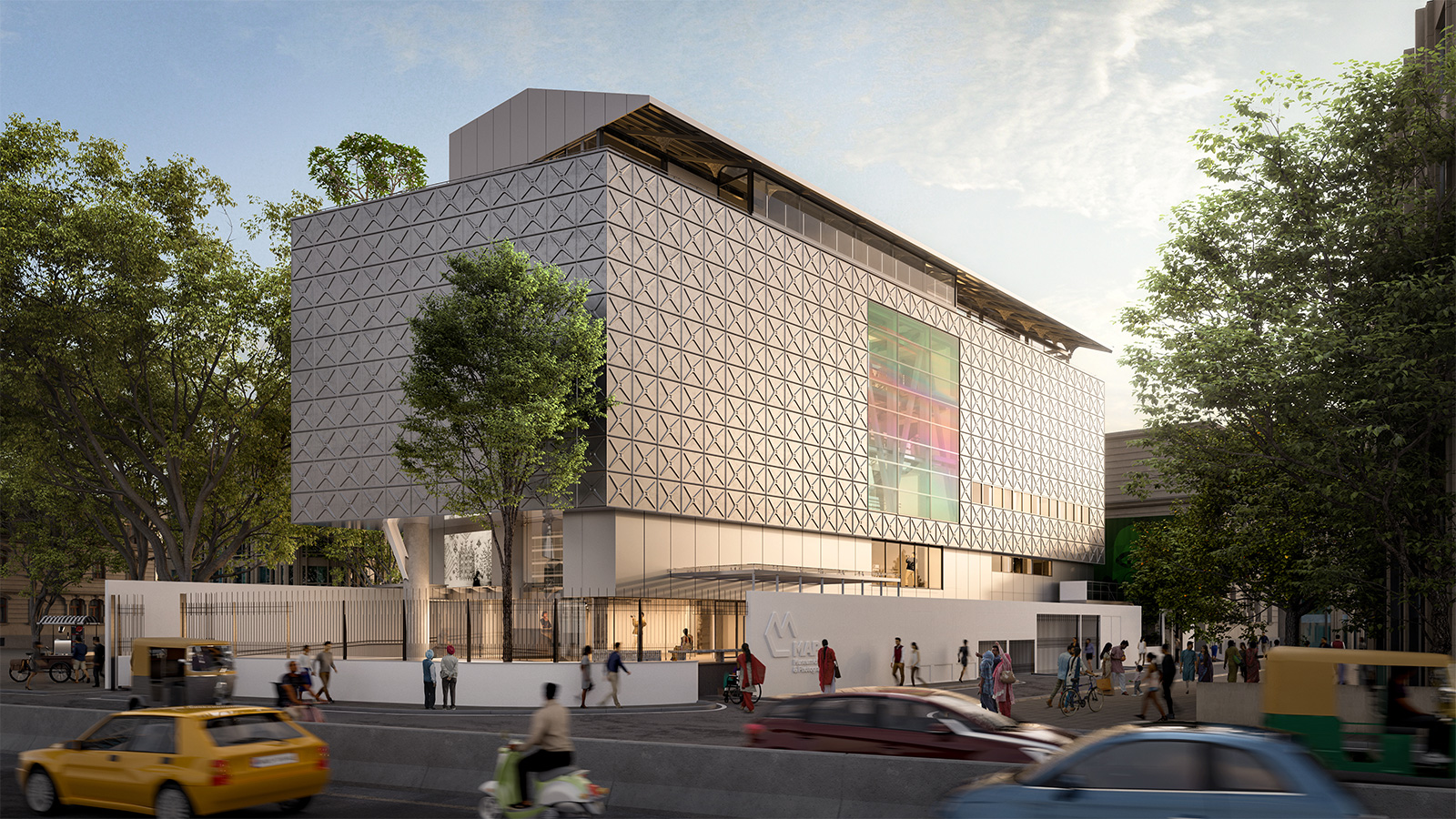








NAME OF PROJECT: MUSEUM OF ART AND PHOTOGRAPHY LOCATION: BANGALORE, KARNATAKA, INDIA CLIENT: ABHISHEK PODDAR YEAR OF COMPLETION: under construction
The Museum of Art & Photography (MAP) is a new museum project in Bangalore centeredaround a large and varied collection of art, photography, textiles, and design, predominantly from the Indian subcontinent. At the heart of MAP’s identity is the idea of tracing and mapping relationships between artistic disciplines – breaking away from older schools of categorisation and striving instead towards a newer idea of narrative building.
MAP aligns themselves with a global shift towards newer modes of curatorial intervention and an increased recognition of the fundamental role of the museum in arts education. It is their vision to transform the perception of museums and art in India, through affecting a change in arts education and research, a professional approach to collection management processes, and by rethinking how art heritage is presented and objects are defined.
Motivated by a need to move beyond the state of the current museum system in India today, MAP intends to become a living institution for the visual arts, and forms part of a new wave of museums in India attempting to draw attention to the cultural value of the arts.
The responsibility of architectural design of a museum / gallery is to give complete foreground to art in all possible ways. Architecture for such a purpose in its imagination has taken this as a primary goal, in its thought, physical structure, representative language and narrative. An idea deeply embedded into the immediate context, the city, people and place and aware of its responsibility to enable art that is by nature unpredictable
The architectural necessity for MAP to be an unmissable part of the city for the visitor and the dweller alike was a critical factor. It had to be iconic with an ease of its physical recognition.
The need to isolate precious art works and artefacts from the exposure to ultraviolet light necessitated an opaque enclosure for the main galleries, along with required temperature and humidity control. On the other hand, the creation of visual transparency within the museum and when looking out of the museum, at all public areas was important.
The opacity that creates the enclosure of the galleries is clad with stainless steel panels, embossed with a cross pattern (structural pattern for stiffening the surface of the cladding, thereby reducing the thickness of the stainless-steel panel sheet and its weight onto the structure) which is traditionally associated with post-industrial metal panel water tanks. This is a metaphorical reference to the capacity of art to create a thrust on society and culture for reflection, change and evolution. And referencing art and its increasing preciousness, like water, within this stainless steel clad container.
The structure of the building is unique, it has a small footprint and an enlarged area for the upper levels / the box like water tank structure. Built in mild steel framing (above the basements in reinforced concrete) its structural elements/ columns shift to the outer surface of the box. To optimise the structure and create column free spaces for the galleries the structure is worked out as a box (that gains its strength from its surface as planes) compared to traditional columns and cantilever slabs at each level. This surface of the structural exterior therefore reiterates the idea of the shell / the skin of the box with a water tank like appearance.
The simplicity of this thought for the MAP building, the materiality, the transparency, and opacity are part of the journey and the story behind the creation of the most significant new destination and architectural icon of the city of Bengaluru dedicated to the culture of the city, the south, the south asian region. The winds that will pass through, from, across and shall bring cultures across the world closer. Beyond the physical entity of the museum / gallery it is the engagement, curiosity, and partnership it can create with people and cultures. That is something MAP has already initiated over the last few years very successfully and new ideas are evolving in this continued pandemic era.
Text SoumitroGhosh about the project and about MAP as excerpts from MAP/ website

